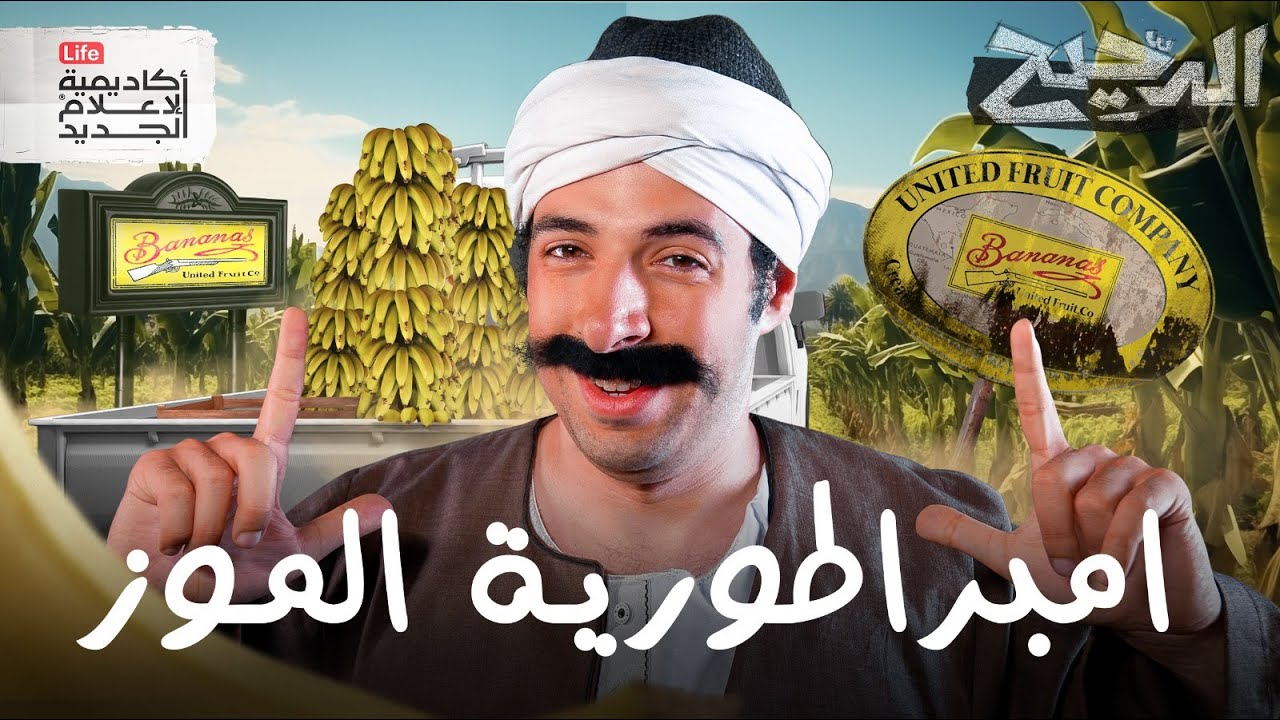The dark history of bananas - John Soluri
Summary
TLDRIn December 1910, exiled Honduran leader Manuel Bonilla sought to reclaim power with the backing of the United Fruit Company, a powerful U.S. corporation known as El Pulpo. The company dominated banana production in Central America, exploiting land and labor while facing challenges like Panama Disease, which devastated Gros Michel plantations. After U.S.-backed coups against democratic governments, the banana industry shifted to disease-resistant Cavendish bananas. Despite reduced economic importance, modern banana farming still grapples with pesticide use and a lack of biodiversity, leaving the industry vulnerable to future crises.
Takeaways
- 🌊 On a December night in 1910, Manuel Bonilla, an exiled former leader of Honduras, attempted to reclaim power with the help of a U.S. corporation known as United Fruit Company.
- 🍌 United Fruit Company, also called Chiquita, was notorious for its influence in Latin America and its role in the banana trade.
- 📈 Bananas were first cultivated in Southeast Asia and made their way to the Americas in the 1500s, where enslaved Africans grew them alongside sugar plantations.
- 🌱 The Gros Michel banana became popular in the U.S. by the late 1800s due to its ideal shipping characteristics and affordability.
- 💰 U.S. fruit companies sought to control banana production in Central America, employing lobbying, bribery, and even coups to secure land.
- 🏞️ United Fruit's extensive plantations led to significant deforestation in countries like Costa Rica, Colombia, and Guatemala.
- 🔬 The vulnerability of densely packed Gros Michel banana farms made them susceptible to disease, particularly the 'Panama Disease' fungus.
- 📉 The spread of Panama Disease resulted in widespread job loss as companies abandoned infected plantations, clearing rainforests for new ones.
- 🗳️ Democratic movements in the 1940s and 1950s challenged United Fruit's power, particularly President Jacobo Arbenz's land reform efforts in Guatemala.
- 🦠 The modern banana industry still faces challenges, as Cavendish bananas, although resistant to Panama Disease, require hazardous pesticides and lack biological diversity, posing risks for future pandemics.
Q & A
Who was Manuel Bonilla and what was his goal in December 1910?
-Manuel Bonilla was the exiled former leader of Honduras who aimed to reclaim power with the help of armed accomplices and financial support from the United Fruit Company.
What is El Pulpo, and why is it significant in the context of the banana industry?
-El Pulpo, or 'the Octopus,' refers to the United Fruit Company, a powerful U.S. corporation involved in the banana trade. Its influence extended throughout Latin America, where it played a key role in the political and economic landscape.
How did bananas first arrive in the Americas, and who cultivated them?
-Bananas arrived in the Americas in the early 1500s, where they were cultivated by enslaved Africans alongside sugar plantations.
What variety of bananas became popular in the U.S. by the end of the 1800s?
-The Gros Michel banana became popular in the U.S. by the end of the 1800s due to its affordability, year-round availability, and endorsement by medical professionals.
What strategies did U.S. fruit companies use to secure land in Central America?
-U.S. fruit companies, including United Fruit, used lobbying, bribing government officials, and funding coups to secure land and ensure their interests were represented in local governments.
What impact did Panama Disease have on the banana industry in the early 1900s?
-Panama Disease devastated Gros Michel banana plantations, prompting companies to abandon infected farms and seek new land for planting, which led to significant environmental degradation.
How did the political landscape change in Guatemala and Honduras after World War II?
-After World War II, democratically elected governments emerged in Guatemala and Honduras that called for land reforms, challenging the power of United Fruit and other corporations.
What was the outcome of President Jacobo Arbenz's land reform efforts in Guatemala?
-President Jacobo Arbenz attempted to buy land from United Fruit for redistribution to landless farmers, but his efforts led to a CIA-backed coup in 1954, resulting in his ousting.
What transition did United Fruit make in the 1960s regarding banana cultivation?
-In the early 1960s, United Fruit switched from the Gros Michel banana, which was susceptible to Panama Disease, to the Cavendish banana, which was more resistant to that particular disease.
What are the current challenges faced by the banana industry today?
-Today, the banana industry faces issues related to pesticide use, which poses health hazards for farmworkers and ecosystems, and a lack of biological diversity that makes it susceptible to new disease outbreaks.
Outlines

Dieser Bereich ist nur für Premium-Benutzer verfügbar. Bitte führen Sie ein Upgrade durch, um auf diesen Abschnitt zuzugreifen.
Upgrade durchführenMindmap

Dieser Bereich ist nur für Premium-Benutzer verfügbar. Bitte führen Sie ein Upgrade durch, um auf diesen Abschnitt zuzugreifen.
Upgrade durchführenKeywords

Dieser Bereich ist nur für Premium-Benutzer verfügbar. Bitte führen Sie ein Upgrade durch, um auf diesen Abschnitt zuzugreifen.
Upgrade durchführenHighlights

Dieser Bereich ist nur für Premium-Benutzer verfügbar. Bitte führen Sie ein Upgrade durch, um auf diesen Abschnitt zuzugreifen.
Upgrade durchführenTranscripts

Dieser Bereich ist nur für Premium-Benutzer verfügbar. Bitte führen Sie ein Upgrade durch, um auf diesen Abschnitt zuzugreifen.
Upgrade durchführenWeitere ähnliche Videos ansehen

A REPÚBLICA DA ESPADA: MARECHAL DEODORO DA FONSECA

5 de outubro de 1910 - O Troll divulga...

إمبراطورية الموز | الدحيح

This Is What a Digital Coup Looks Like | Carole Cadwalladr | TED

The British Arrival in India| Digital Comic |l O'levels| Pakistan Studies 2059

K-12 Educator Institute | Dr. Amalia Leguizamón | Class 1
5.0 / 5 (0 votes)
